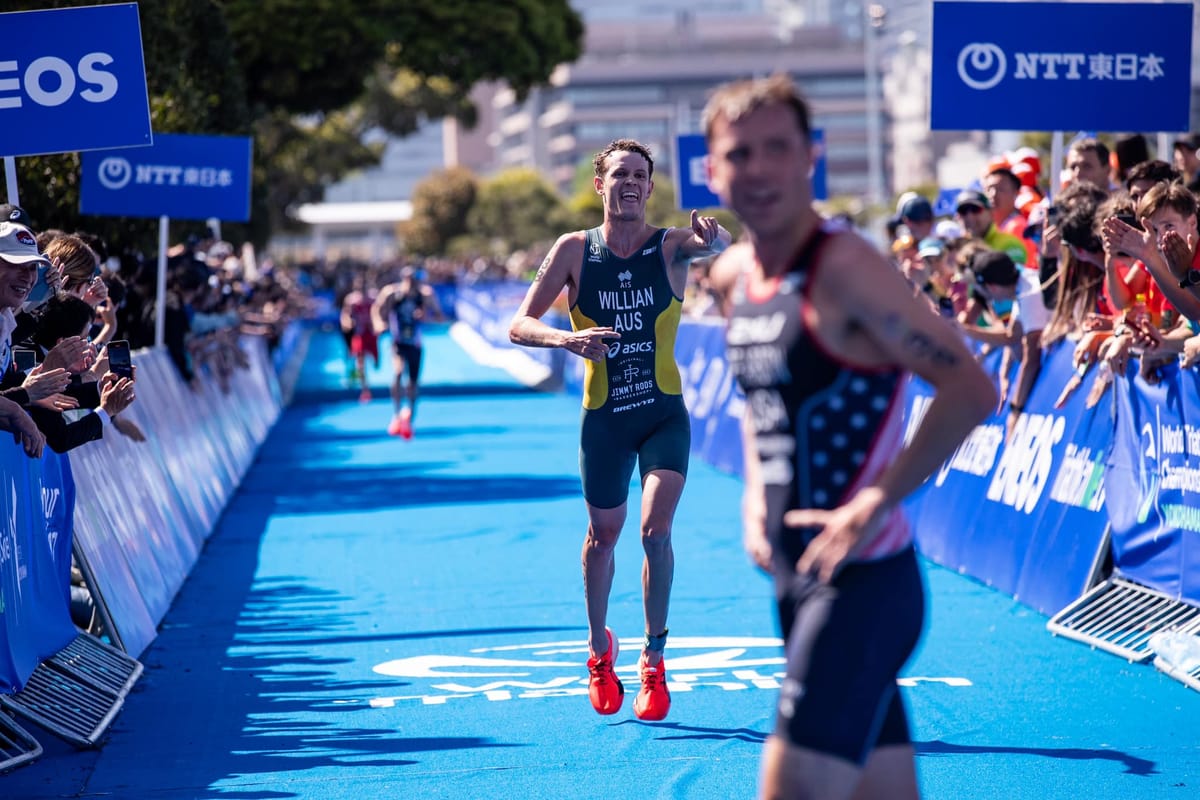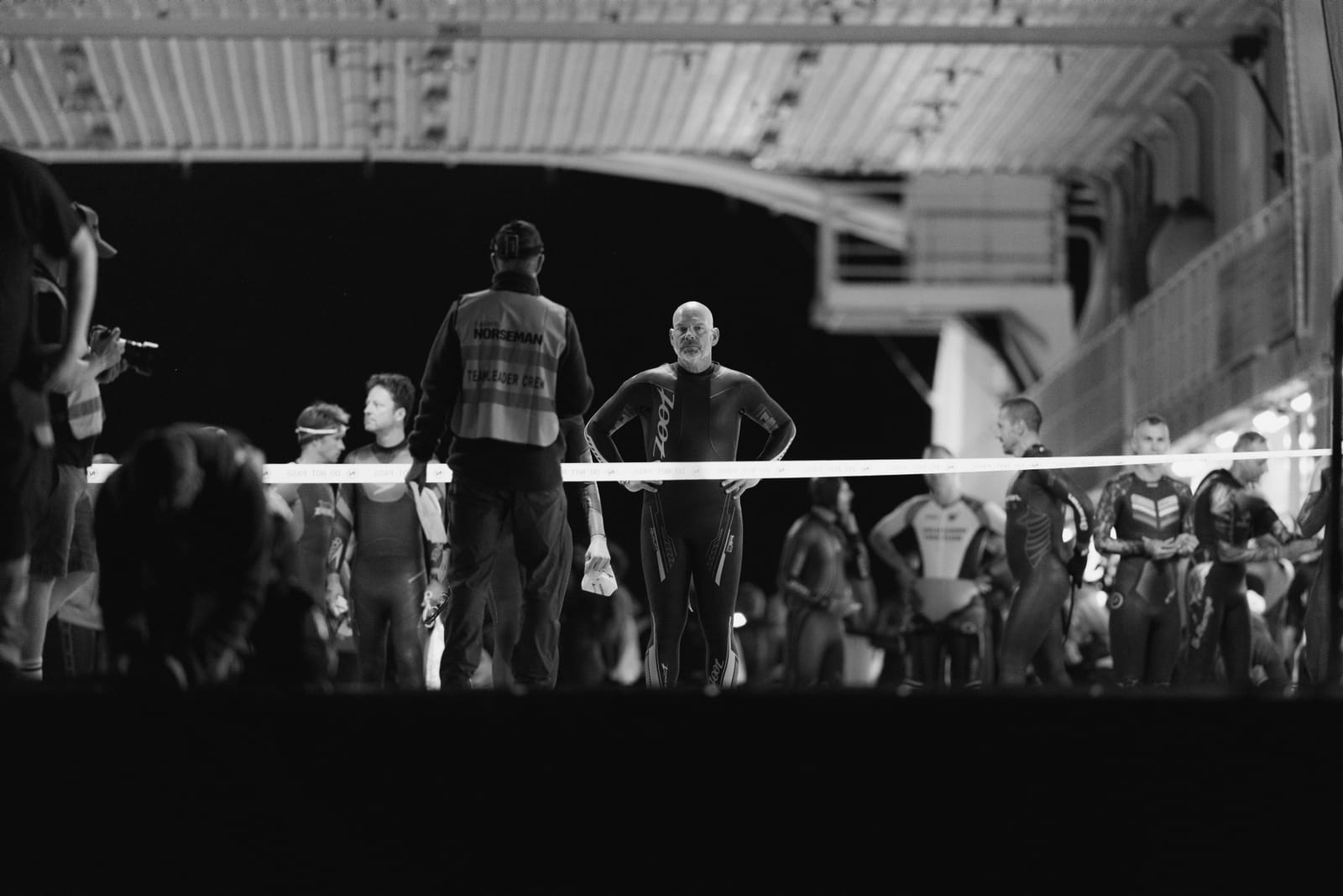American Morgan Pearson claimed his first World Triathlon Championship Series (WTCS) victory in Yokohama with a blistering 29m11s 10km run, becoming the first American male to reach a top-tier podium since the start of the Series era. Australia's Matthew Hauser finished second, while his compatriot Luke Willian secured a crucial third place, confirming his spot at the Paris 2024 Olympics.
The thrilling final laps of the run saw Pearson and Willian break away, only for Hauser to launch a stunning late surge, overtaking Willian and nearly catching Pearson at the finish line.
Pre-Race Expectations and Conditions
Athlete Highlights
The men's race featured a highly competitive field, despite the absence of previous winners Alex Yee and Hayden Wilde. The start list included several former world champions and top-tier athletes, setting the stage for an exciting and unpredictable race.
Vincent Luis, the 2019 and 2020 world champion, was one of the favorites heading into the event. Known for his strong swimming and tactical racing skills, Luis was expected to be a major contender for the podium. Dorian Coninx, the reigning world champion, was another athlete to watch, with his consistent performances and all-around abilities making him a threat in any race.
Other notable competitors included Kristian Blummenfelt, the Olympic gold medalist and 2021 world champion who has proven his ability to perform at the highest level. Jonas Schomburg, a rising star in the sport, was also expected to be in the mix, having shown impressive form in recent races.
The presence of strong squads from countries like Australia, France and the United States added an extra layer of intrigue to the race. With athletes like Matthew Hauser, Leo Bergere, and Morgan Pearson representing their respective nations, the potential for team tactics and strategic racing was high.
Conditions
In contrast to the challenging weather conditions faced in previous editions of WTCS Yokohama, the 2024 race took place under sunny skies. The favorable weather provided ideal conditions for fast racing, with athletes able to push themselves to their limits without the added challenges of rain or extreme temperatures.
The swim leg was expected to be crucial, as the flat and relatively calm waters of Yokohama Bay have historically allowed strong swimmers to establish early leads. The technical bike course, with its tight corners and narrow sections, demanded skill and concentration from the athletes, while the flat run course was primed for fast times and exciting finishes.
How the Race Was Won
Swim
As the gun went off, Márk Dévay of Hungary and France's Vincent Luis quickly established themselves at the front of the pack. Known for their strong swimming abilities, both athletes aimed to capitalise on their strengths and create an early gap over the rest of the field.
Dévay, who had previously led the swim in Yokohama, set a blistering pace from the start, with Luis matching him stroke for stroke. Their strategy was clear: to push the pace and string out the field, reducing the chances of a large group forming on the bike leg.
I was so close to qualifying last time (to Tokyo) and missed out on the discretionary selection and this whole journey has been about taking my opportunities and making my own destiny, so it's pretty special. It was quite stressful the whole race, got caught in the crash and dug in deep to get back on, then the legs started cramping that last lap and I just really wanted that podium. I didn’t want to just qualify, I want to compete and strive for the best, and it’s pretty special the other Aussie on the podium is my roommate. - Luke Willian
Close behind the leading duo, Dorian Coninx of France and Germany's Jonas Schomburg were locked in a battle of their own. Coninx, the reigning world champion, showcased his swimming strength, while Schomburg, a rising star in the sport, refused to let the Frenchman out of his sight. Their positioning was crucial, as they aimed to minimise the gap to the leaders and set themselves up for a strong bike leg.
As the swim progressed, several other athletes emerged as strong performers, jostling for position in the lead pack. Australia's Matthew Hauser, known for his consistent and well-rounded abilities, navigated the waters of Yokohama Bay with skill and precision. Hauser's swim set him up for a strong overall performance, allowing him to conserve energy for the demanding bike and run legs ahead.
Kenji Nener of Japan and Mexico's Miguel Hidalgo also showcased their swimming abilities, maintaining contact with the leaders and positioning themselves well for the transition. Nener, racing on home soil, had the added motivation of performing well in front of a supportive crowd, while Hidalgo aimed to build on his recent successes and establish himself as a contender on the world stage.
Two other athletes to watch in the swim were Norway's Vetle Bergsvik Thorn and Portugal's Vasco Vilaca. Bergsvik Thorn, known for his strong bike leg, used the swim to set himself up for a potential breakaway on the technical Yokohama course. Vilaca, a consistent performer in the World Triathlon Championship Series, also positioned himself well, aiming to stay in contention and capitalize on his running strength in the later stages of the race.
Bike
The technical bike course in Yokohama presented numerous challenges for the athletes, with tight corners, narrow sections, and a few short, sharp climbs.
As the race progressed, a large pack of 33 men formed on lap two of the nine-lap course, with Jonas Schomburg setting the pace at the front. The German athlete, known for his strong cycling abilities, pushed the tempo in an attempt to break away from the field and establish a lead.
The chase group, which included notable athletes such as Jelle Geens, Hugo Milner and Matthew McElroy, worked together to bridge the gap to the leaders. Their efforts were crucial in ensuring that no single athlete or small group could escape.
As the dust settled from the crashes, the lead group had splintered, with Luke Willian and Jonas Schomburg emerging as the first athletes into transition. Jelle Geens, Matthew Hauser, and Kenji Nener were close behind, while Morgan Pearson faced a small deficit due to a slower transition.
Run
As the athletes transitioned onto the run, the intensity of the race reached its peak. Luke Willian, Jonas Schomburg and Jelle Geens quickly formed a lead group, setting a blistering pace from the outset. Willian, in particular, looked strong and determined, his sights set on securing a podium finish and the all-important Olympic qualification.
Morgan Pearson, who had lost some time in transition, wasted no time in making his move. The American athlete, known for his exceptional running ability, surged through the field, picking off competitors one by one. By the time the leaders reached the end of the first lap, Pearson had caught up to Willian, forming a formidable duo at the front of the race.
Behind them, the chase group was in hot pursuit, with Charles Paquet of Canada making a bold move to bridge the gap. Paquet's effort was impressive, as he briefly moved into third place, but the relentless pace set by Willian and Pearson would prove too much for the Canadian to maintain.
As the race progressed, the lead group splintered, with Geens and Schomburg losing contact and fading back into the chasing pack. Matthew Hauser, who had paced himself well on the bike and through the early stages of the run, moved into contention, along with Kenji Nener, Vincent Luis, and Leo Bergere.
In the final laps of the run, Morgan Pearson and Luke Willian broke away from the field, opening up a significant gap on their pursuers. The two athletes, both showing incredible form and determination, pushed each other to their limits, trading strides and surges as they battled for top spot.


Matt Hauser 2nd while Luke Willian secures 3rd and his ticket to the 2024 Paris Olympics.
Behind them, Matthew Hauser was mounting a charge of his own. Hauser, known for his strong finishing ability, steadily reeled in Willian, passing his compatriot in the closing stages of the race to secure the silver medal.
But the day belonged to the American, Morgan Pearson. He maintained his lead over the final kilometres, crossing the finish line in a remarkable time of 29 minutes and 11 seconds for the 10km run.
Willian, despite being overtaken by Hauser in the final stretch, held on for a well-deserved third place. The Australian's podium finish was a significant achievement in its own right, securing his spot at the Paris 2024 Olympics and fulfilling a lifelong dream.
Results: Elite Men
- Morgan Pearson USA 01:42:05
- Matthew Hauser AUS 01:42:12
- Luke Willian AUS 01:42:20
- Léo Bergere FRA 01:42:26
- Charles Paquet CAN 01:42:30







